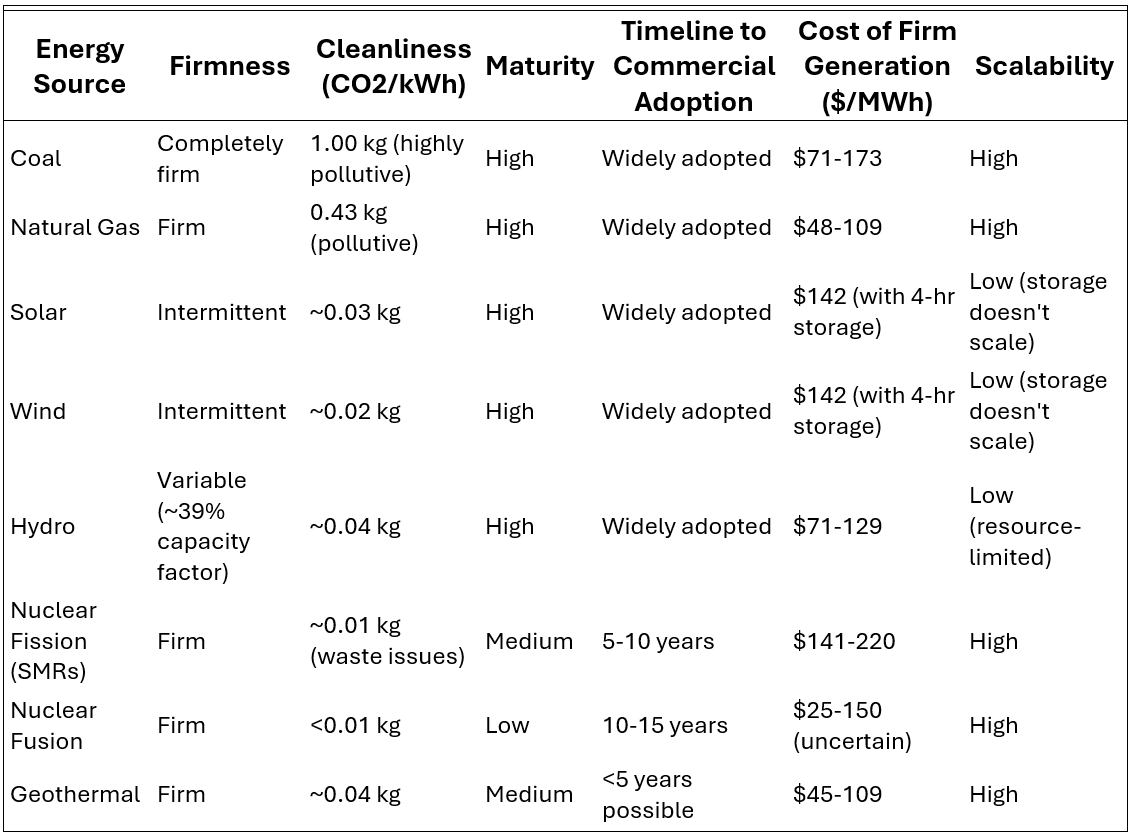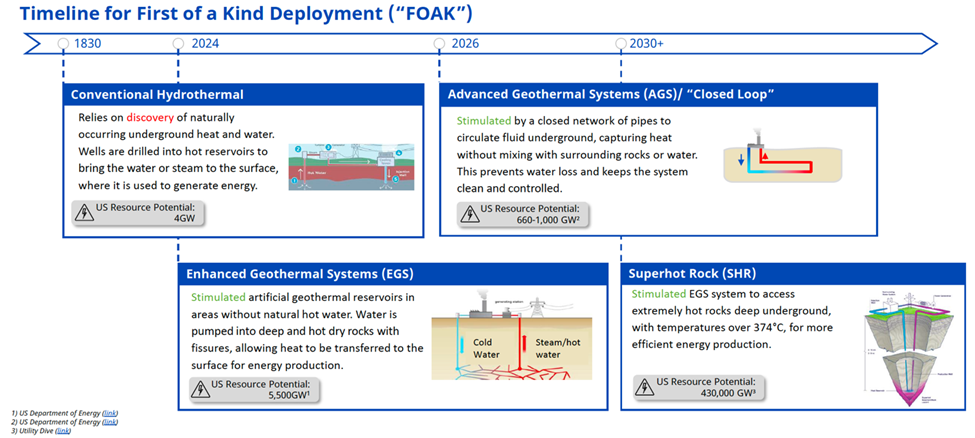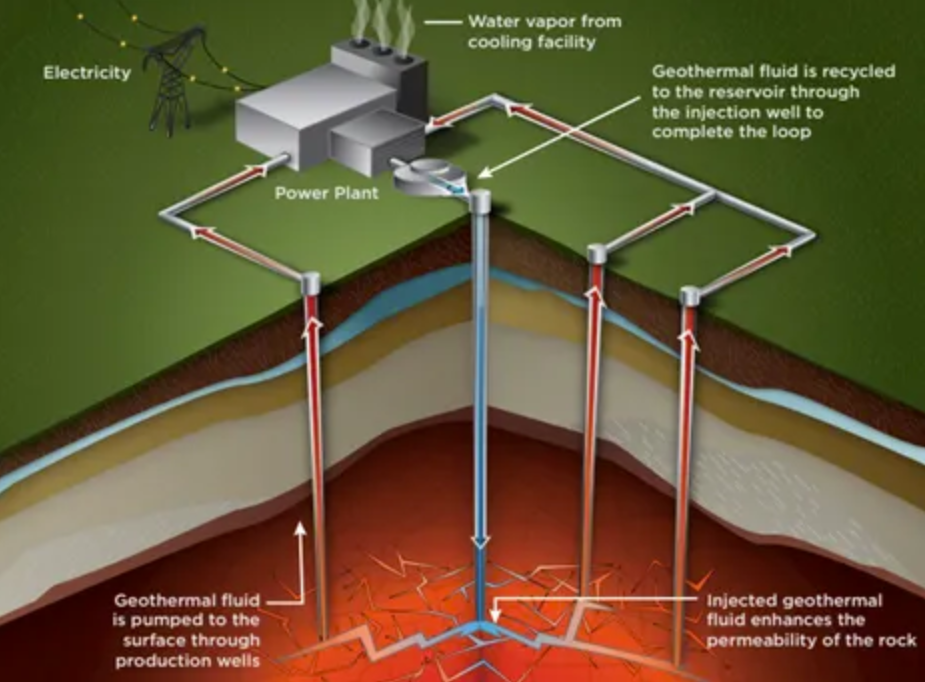David Delfassy (Investment Director) & Joshua Rubnitz (Investment Analyst) | TDK Ventures
Introduction
At TDK Ventures, a key tenet of our mission is to invest in technologies that accelerate the global energy transformation, fostering innovations that deliver sustainable, scalable solutions to humanity’s grand challenges. Rodatherm’s pioneering next-generation geothermal system represents a breakthrough in this pursuit, offering firm, low-carbon power at costs competitive with fossil fuels. We are proud to partner with Rodatherm and seek to scale the impact of their innovations through both investment and by offering as much “TDK Goodness” as we can. This investment aligns with our strategy to gain early insights into disruptive energy technologies while unlocking synergies across TDK’s portfolio. Rodatherm’s approach not only addresses geothermal’s historical limitations but also positions it as a cornerstone of the clean energy future, with the potential to scale to gigawatts of capacity by 2035. Here, we aim to convey the “why” behind our investment in Rodatherm and share some of our insights, assumptions, and understanding of the market in support of the greater community.
Geothermal as the First Firm, Low-Carbon, and Affordable Generation Technology
The global energy landscape is undergoing a profound shift, driven by surging electricity demand from data centers, AI, electrification, and digital transformation. Electricity demand is currently surging, with projections indicating that U.S. power demand could double by 2050 [1], necessitating reliable, decarbonized sources. Of the many potential technological pathways, geothermal energy is among the most compelling options: harnessing Earth’s subsurface heat to spin[CC1] turbines and produce electricity. Unlike solar and wind, which are intermittent and require storage for firmness, geothermal offers baseload power — continuous, dispatchable energy with capacity factors exceeding 90% [2]. Geothermal emits just 0.04 kg CO2/kWh [3], rivaling hydro and surpassing nuclear fission’s waste concerns. With levelized costs as low as $45–109/MWh for firm generation [4], it undercuts firmed solar/wind ($142/MWh with batteries) and competes with natural gas ($48–109/MWh).
Table 1. Comparison of energy sources [5–8].

Historically, geothermal has been constrained to hydrothermal systems, relying on rare natural reservoirs of hot water and steam near tectonic boundaries (e.g., Iceland, Philippines). These yield ~4 GW in the U.S. and 16 GW globally [9] but face scalability limits due to geographic specificity, exploration risks, and high costs from fluid management and corrosion.
Next-generation innovations expand this potential. Enhanced Geothermal Systems (EGS) fracture hot dry rock to create artificial reservoirs, accessing 5,500 GW in the U.S. alone [7]. Superhot Rock EGS (SHR) targets depths exceeding 5 km or magmatic zones (>374°C), where supercritical fluids boost efficiency 5–10x, potentially unlocking 430,000 GW [10]. Rodatherm’s closed-loop design could access 660–1,000 GW in permeable sedimentary basins with minimal environmental impact [11].
These modalities build on oil & gas (O&G) advancements, such as horizontal drilling and fracking from the shale boom. Leading startups demonstrate progress with examples achieving 3.5 MW demonstrations and securing PPAs with major tech firms. However, gaps persist, such as high drilling CapEx ($350–1,000/ft for EGS), seismic risks, high water use, and high operating costs[CC2] ($10–18/MWh), and material challenges in extreme conditions. Despite these challenges, we are confident that geothermal’s long-term promise lies in its low land use, 24/7 reliability, and scalability, giving the various modalities of geothermal the potential to scale to potentially 10–20% of global energy production by 2050 [12]. Innovators like Rodatherm, will help bridge economic and deployment hurdles.
Geothermal Has Been Limited, but the Time to Invest is Now

Figure 1. Developments in geothermal energy solutions.
Geothermal’s past limitations stem from resource scarcity and poor economics. Conventional hydrothermal depends on unique geology — heat, permeability, and water — limiting U.S. potential to 4 GW [10]. Low temperatures yield inefficiencies, create high OpEx from corrosion, and carry risky exploration, deterring capital amid stagnant demand (1% annual growth for 30 years) and lengthy permitting (8+ years).
However, the landscape has changed significantly. With surges in power and energy demand, there is renewed interest in firm clean power. Hyperscalers pay premiums for expedited geothermal PPAs. Permitting now takes months instead of years via U.S. federal categorical exclusions. Shale technologies have enabled novel engineering systems, targeting predictable high-temperature resources with lower OpEx. Capital is flowing in, including $100M project equity and $246M in loans for leading projects.
With global demand projected to double by 2050 [13], geothermal’s economics and availability make now an ideal time to invest — especially with the advent of next generation systems that unlock previously untapped resource potential. EGS injects water into fractured dry rock; SHR accesses supercritical zones; AGS uses closed loops for controlled heat capture, avoiding water loss. This expands U.S. potential from 4 GW (hydrothermal) to 5,500 GW (EGS), 430,000 GW (SHR), and 660–1,000 GW (AGS) [10]. Geothermal could capture 10–20% of 2050 energy, with low-cost capital awaiting proven scalability [14].

The King of the Hill: Viable Unit Economics with Scalable Tech
Reviewing ~30 startups, we defined “King of the Hill” criteria as follows:
- Credible pathway to a levelized cost of electricity competitive with firm power (including fossil fuels) at early project scale, with a scalable technology.
- Credible pathway to commercial traction in less than 5 years.
- Credible pathway to accessing non-dilutive project financing at early project scale.
- An especially strong team which must have subsurface experience, the ability to attract top talent and large capital, and have experience building companies operationally from the ground-up.
Why We Invested in Rodatherm
Rodatherm Energy Corporation, founded in 2022 and headquartered in Calgary, Canada, with development operations in Salt Lake City, Utah, is a privately held geothermal power generation company with a primary focus on the Great Basin region in the Western United States. An agile team, Rodatherm leverages innovation and technology to harness safe, clean, and reliable energy, distinguishing itself through its pioneering fully cased, pressurized closed-loop system.
Sited in permeable sedimentary basins at temperatures around 200°C, the system uses pressurized refrigerant as a working fluid — requiring 5x less volume than water-based systems due to its lower specific heat circulating via a natural thermo-siphon effect. This minimizes external power needs and achieves a 50% higher power conversion efficiency than traditional binary-cycle geothermal setups by directly driving radial inflow turbines [15].
This engineered Carnot cycle, analogous to an underground heat pump, benefits from both conductive and convective heat transfer in “hot wet rock,” which is superior to dry-rock systems that rely solely on conduction and necessitate longer wells or large fracture networks.
Rodatherm’s leadership team brings decades of proven expertise from the O&G sector, ensuring operational excellence and de-risked execution. CEO and President Curtis Cook, a University of Calgary alumnus with over 30 years in O&G, founded and led a major energy company from 2010 to 2018, and brings a major track record of building scalable energy ventures from the ground up.
Shane Engelking, a second-generation O&G drilling engineer with 33 years of experience, previously collaborated with Cook, where he drilled 192 extended-reach horizontal wells (up to 22,000 ft) and reduced drilling costs by 48% over two years. His expertise in well designs similar to Rodatherm’s ensures technical precision in subsurface operations. Filling out the team is a group of highly experienced professionals with demonstrable track records leading large infrastructure projects and managing multi-billion capital expenditures. This team’s synergy — combining entrepreneurial vision, drilling proficiency, a deep process engineering understanding, and project development acumen — positions Rodatherm to navigate geothermal’s complexities effectively while creating bankable solutions.
Key innovations include:
- A well understood process cycle design, the system is analogous to a heat pump “at depth.”
- A thermodynamically closed system can be placed in any reservoir environment with no concern for working fluid loss or contamination from the reservoir, significantly lowering operating and maintenance costs compared to competing systems which expose the working fluid directly to the rock.
- Uses a novel working fluid, which can extract the required heat from the underground reservoir with 5X less fluid compared to traditional water based geothermal systems.
- The system has a targeted operating life spanning multiple decades, does not use fresh water, and has a small, energy dense surface footprint.
- All of the individual technologies used in Rodatherm’s system are fully mature and commercialized. The novelty of Rodatherm’s technology lies in the way design features are combined into a patented modular system that achieves the most economical performance overall.
Opportunities for Synergy with TDK Products
Rodatherm aligns strategically with TDK Corporation’s commitment to energy transformation. The companies envision broad opportunities for collaboration that combine TDK’s strengths in advanced components, sensors, and energy systems with Rodatherm’s innovative geothermal technology. Potential synergies include integrating smart sensing and monitoring platforms to enhance system reliability and efficiency in demanding environments, leveraging TDK’s power electronics and capacitor expertise to support energy conversion and grid integration, and exploring how energy storage solutions could complement geothermal operations.
In addition, this partnership could help advance sustainable energy sourcing for TDK, an initiative that sits at the core of TDK’s sustainability journey and 2050 net-zero commitment. Across the company, TDK is rapidly converting its operations to clean electricity: all TDK manufacturing sites in Japan now use 100% renewable electricity, TDK-Lambda has achieved 100% renewable power across all of its manufacturing sites worldwide, and TDK Electronics supplies every production site with electricity from renewable sources. This global commitment is backed by region-specific solutions, including the use of geothermal power for all electricity at TDK Philippines and a combination of geothermal and hydropower to supply TDK Foil Iceland, complemented by large solar deployments and other renewables in additional markets.
By co-developing solutions, TDK can refine products for geothermal’s unique demands — high temperatures, corrosive fluids, remote operations — while Rodatherm gains access to cutting-edge tech, fostering mutual growth in the energy transition.
Follow us on LinkedIn:
References
[1] US Dept of Energy: Geothermal Technologies Office: https://www.energy.gov/eere/geothermal/geothermal-technologies-office
[2] DOE Guide to Geothermal Heat Pumps: https://www.energy.gov/sites/prod/files/guide_to_geothermal_heat_pumps.pdf
[3] Geothermal energy: A sustainable and cost-effective alternative for clean energy production and climate change mitigation: https://www.sciencedirect.com/science/article/pii/S2666188825008081
[4] DOE Launches New Energy Earthshot to Slash the Cost of Geothermal Power: https://www.energy.gov/articles/doe-launches-new-energy-earthshot-slash-cost-geothermal-power
[5] Levelized Cost of Energy, June 2025: https://www.lazard.com/media/eijnqja3/lazards-lcoeplus-june-2025.pdf
[6] Georgian Renewables: https://tbccapital.ge/static/file/202306214500-bag-tbc-capital-levelized-cost-of-electricity-report-jun-2023.pdf
[7] Advanced Reactor Deployment Timelines: https://nuclearinnovationalliance.org/sites/default/files/2024-08/NIA%20AR%20Timeline%20-%20August%202024.pdf
[8] Can fusion energy be cost-competitive and commercially viable? An analysis of magnetically confined reactors: https://www.sciencedirect.com/science/article/abs/pii/S0301421523000964#:~:text=For%20fusion%20to%20be%20competitive,it%20to%20become%20commercially%20viable.
[9] US Department of Energy: https://www.energy.gov/eere/geothermal/geothermal-technologies-office
[10] Clean Air Task Force: https://www.catf.us/2024/03/superhot-rock-geothermal-energy-unlock-terawatts-clean-firm-power-worldwide/
[11] TDK Ventures Estimate
[15] Rodatherm Secures USD 38 Million Oversubscribed Series A Funding to Pioneer Next-Generation Geothermal Energy: https://rodatherm.com/rodatherm-secures-usd-38-million-oversubscribed-series-a-funding-to-pioneer-next-generation-geothermal-energy/
[CC1]Rodatherm does not generate steam — no water process
[CC2]I don’t have updated O&M NREL numbers; however, I have notes showing number between $10–18/MWh associated with geothermal binary systems.



